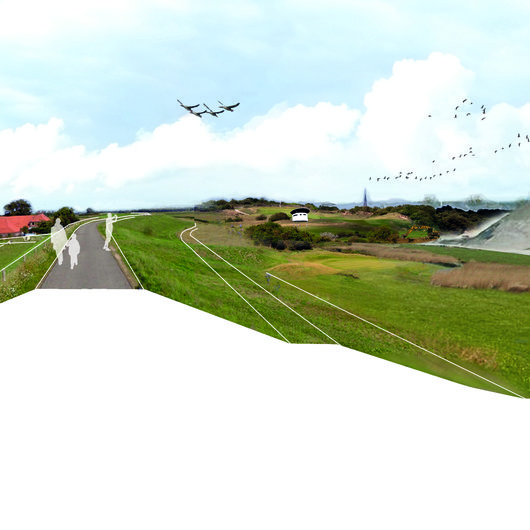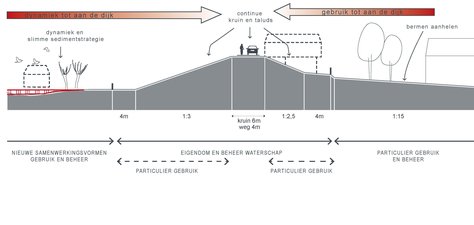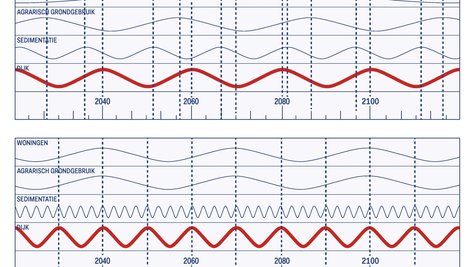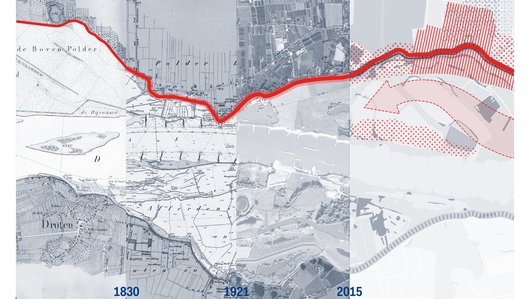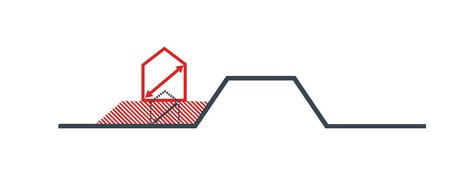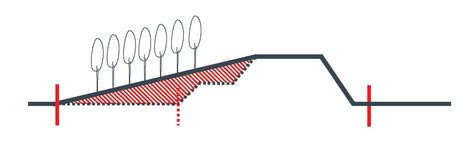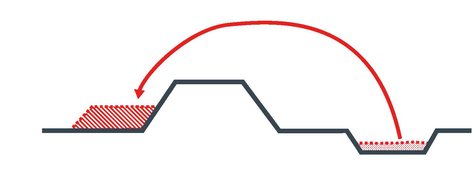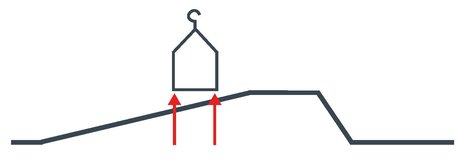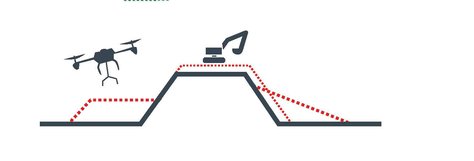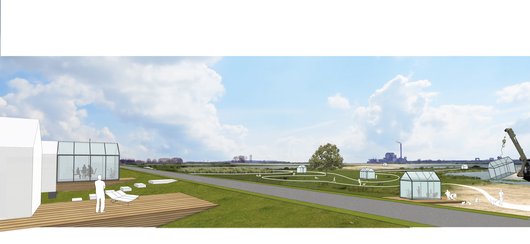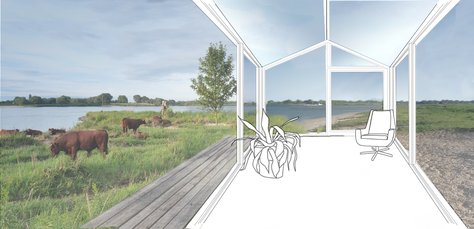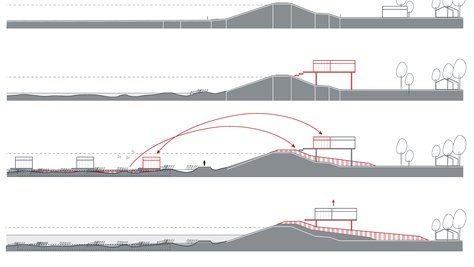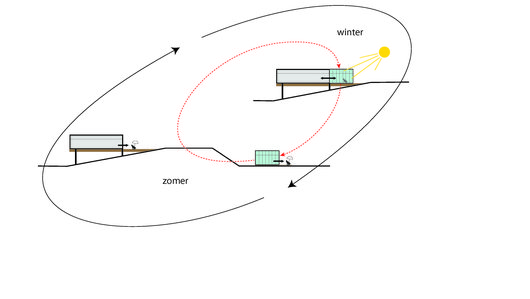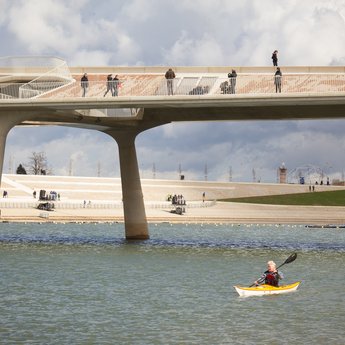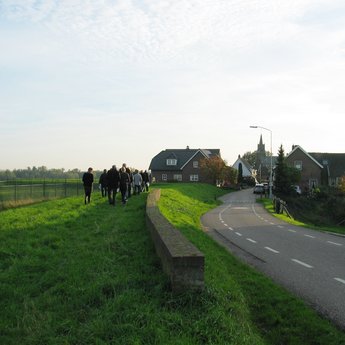MOTIVE
The adaptive dike requires a new approach and forms of social interaction. Consequently, the role of the water board, which will manage the spatial and functional connection between foreland and hinterland, also changes. Dike managers and the authorities are making agreements with third parties, as a result of which the contractor will be responsible for reinforcing and maintaining the dike for a considerable periode of time. New strategies and techniques are implemented and optimalised. Low-tech solutions involving sand distribution, sand irrigation and (autonomous) robotised building will be applied to reinforce the dike.
But these solutions also contribute to the quality of the environment and local support for this continuing execution phase, due to opportunities for small scale and social initiatives.
